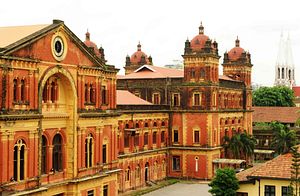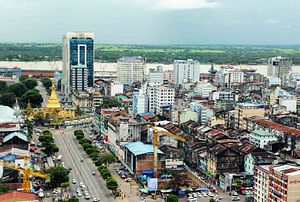Walking through the chaotic and vibrant streets of downtown Rangoon, now called Yangon, it is easy to be whisked away by the romance of a bygone era where the city was a heartbeat of the British Empire. Many of the once stately red colonial brick facades that once housed the administrative power of British Burma are now cloaked in shades of green mold and ferns after generations of neglect.
Nearby to downtown, the decadent roman column strewn halls of the remains of the now-abandoned British Pegu Club are wrapped in cobwebs. The ballroom that once hosted British royalty is now locked away from visitors. Inside the empty corridors of the clubhouse and hotel, the ghosts of a glamorous past are seen in a marble spiral staircase, teak floors and old telephone outlets.
Throughout the city, buildings built over the past two centuries including dispensaries, movie theaters and government halls that made up old Rangoon are still as important to the 5 million inhabitants of the city as ever before, serving as makeshift homes for families and businesses.
A new book, Relics of Rangoon for the first time profiles through in-depth research and photography the inside and out of more than 200 of the city’s architectural gems.
The book will be the culmination of over two years of research with a team of more than eight researchers, over 8,000 photographs, hundreds of hours of interviews with custodians, trustees, government officials, custodians, architects and conservation experts, and documentation research in the Myanmar National Archives.
Relics of Rangoon has already received wide praise from historians and critics alike who hail the project not only for the plus 700 photographs within, but as a first time look into the history of some of the city’s most overlooked buildings.
To learn more about the book or to buy a copy online, visit the project’s website at www.relicsofrangoon.com.














































